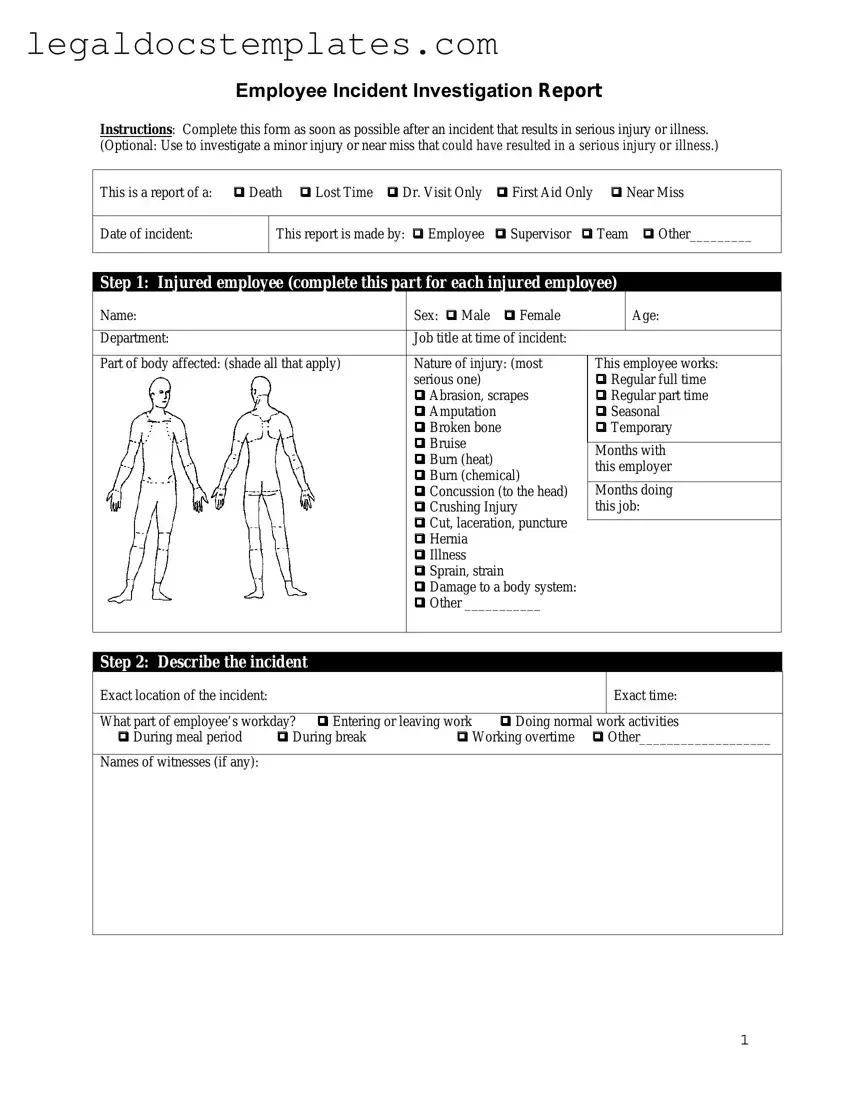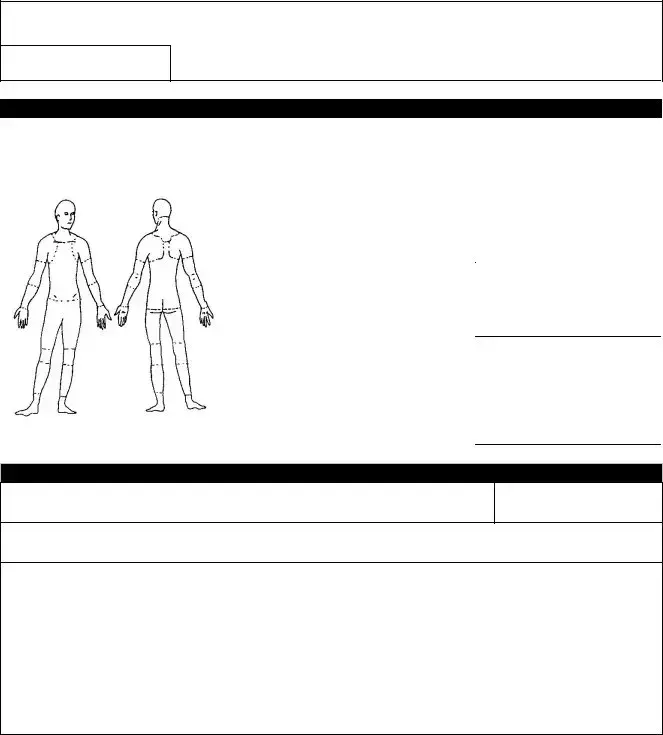An Employee Accident Report form is a document used by businesses to record details of accidents involving employees in the workplace. It typically includes information about the incident, such as the time and location, description of the accident, names of individuals involved, and any injuries sustained. This form is crucial for documenting incidents to ensure proper management of workplace safety and compliance with occupational health and safety regulations.
The person who experienced the accident should complete the Employee Accident Report form to the best of their ability. If the employee is unable to fill out the form due to the nature of their injuries, a witness or the supervisor present at the time of the accident may complete the form on the employee's behalf, ensuring accuracy of the reported information.
This form should be completed as soon as possible after the accident occurs, ideally within the same day. Prompt reporting ensures that the details of the accident are recorded accurately while they are still fresh in the memories of those involved and witnesses. Delayed reporting can lead to inaccuracies and hinder proper investigation and measures to prevent future incidents.
The required information usually includes:
-
The date and time of the accident.
-
Location of the accident within the workplace.
-
A detailed description of the incident.
-
Names and contact information of any witnesses.
-
Details of injuries sustained and any first aid or medical treatment provided.
-
Possible preventive measures to avoid future accidents.
This form plays a critical role in managing workplace safety. It helps in:
-
Identifying hazards and risks to prevent future accidents.
-
Ensuring that injured employees receive proper medical attention.
-
Complying with workplace safety regulations and legal requirements.
-
Protecting the company against potential legal action by providing documentation of the incident.
After submission, the form is reviewed by the employer or the workplace safety officer. The incident may be investigated to determine its cause and to develop strategies to prevent similar accidents in the future. Actions taken may include implementing safety measures, providing additional training to employees, or making changes to the workplace environment or procedures. The report may also be used for insurance purposes and to comply with regulatory reporting requirements.
While the form contains personal and sensitive information, its confidentiality is subject to workplace policies and relevant laws. Generally, access to these reports should be limited to individuals who need the information to perform their job functions, such as safety officers, HR personnel, and management. However, certain details may need to be shared with insurance providers or regulatory bodies as required by law.
Yes, many organizations allow electronic submission of the Employee Accident Report form to streamline the reporting process. Electronic submission can facilitate quicker response times for addressing safety concerns and makes it easier to store and retrieve reports for future reference. However, specific procedures for electronic submission vary by organization.
The Employee Accident Report form can have significant legal implications. It serves as a formal record of the incident, which can be critical in the event of lawsuits or workers' compensation claims. Accurate and timely documentation on the form can help employers defend against claims of negligence or non-compliance with safety regulations. Conversely, inaccuracies or failure to report an accident can have legal and financial repercussions for both the employee and employer.



